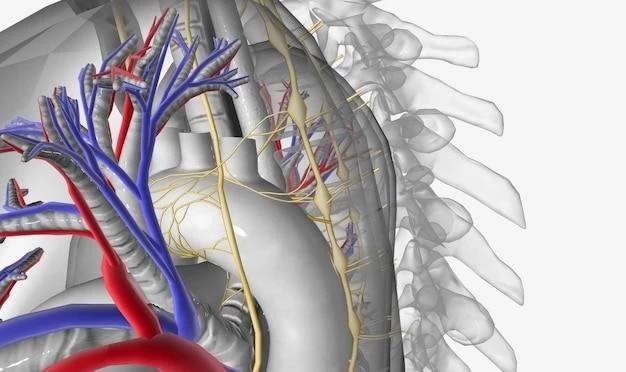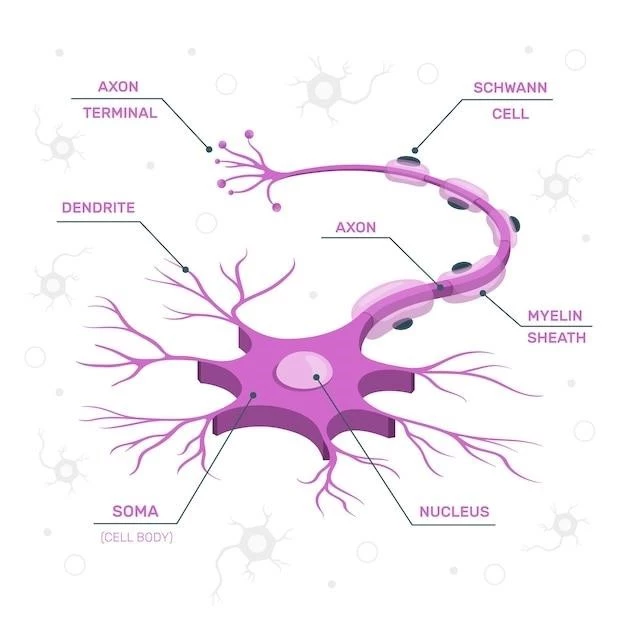Introduction to Nerve Sheath Neoplasm
Peripheral nerve sheath neoplasm is a diverse group of tumors affecting the myelin surrounding nerves. From benign schwannomas to aggressive malignant peripheral nerve sheath tumors‚ these neoplasms pose various challenges in diagnosis and treatment.
Definition and Classification of Nerve Sheath Tumors
Nerve sheath tumors encompass a wide range of lesions‚ from benign schwannomas to aggressive malignant neoplasms like malignant peripheral nerve sheath tumors (MPNSTs). These tumors arise from the myelin surrounding nerves and can vary in histological features and clinical behavior.

Causes and Risk Factors
Genetic mutations play a crucial role in the development of nerve sheath neoplasms‚ particularly in individuals with neurofibromatosis type 1 (NF1). Mutations in the NF1 gene can lead to the formation of various nerve sheath tumors‚ including malignant peripheral nerve sheath tumors (MPNSTs).
Genetic Mutations and Neurofibromatosis Type 1 (NF1)
Neurofibromatosis Type 1 (NF1) is linked to mutations in the NF1 gene‚ leading to the development of various nerve sheath tumors‚ including Malignant Peripheral Nerve Sheath Tumors (MPNSTs). These tumors are aggressive and contribute significantly to mortality in NF1 patients due to dysregulated RAS signaling.
Types of Nerve Sheath Neoplasms
Nerve sheath tumors comprise a diverse range‚ from benign schwannomas to malignant peripheral nerve sheath tumors (MPNSTs). Schwannomas and neurofibromas are common examples‚ each presenting unique characteristics and treatment challenges.
Schwannoma and Neurofibroma
Schwannomas and neurofibromas are common types of nerve sheath tumors. Schwannomas are benign tumors originating from Schwann cells‚ while neurofibromas involve different tissues in the nerve sheath. These tumors present distinct histological and clinical characteristics‚ requiring specific approaches for diagnosis and management.
Symptoms and Diagnosis
The symptoms of nerve sheath neoplasms can vary based on the location and size of the tumor‚ including pain‚ numbness‚ weakness‚ and changes in sensory perception. Diagnosis often involves neurological exams and imaging tests like MRI or CT scans.
Identification through Neurological Exams and Imaging Tests
Diagnosing nerve sheath neoplasms often involves neurological exams to assess symptoms like pain‚ weakness‚ and sensory changes. Imaging tests such as MRIs or CT scans are crucial for visualizing the tumors and determining their location and extent within the nervous system.
Treatment Options
Treatment for nerve sheath neoplasms often involves surgical resection to remove the tumor. Other options may include chemotherapy and radiotherapy to target any remaining cancer cells and reduce the risk of recurrence.
Surgical Resection‚ Chemotherapy‚ and Radiotherapy
The primary treatment options for nerve sheath neoplasms include surgical resection to remove the tumor‚ chemotherapy to target cancer cells systemically‚ and radiotherapy to kill remaining cancer cells and prevent recurrence. These approaches aim to manage the disease effectively while minimizing potential long-term effects.
Malignant Peripheral Nerve Sheath Tumors (MPNSTs)
Malignant Peripheral Nerve Sheath Tumors (MPNSTs) are aggressive soft tissue sarcomas with nerve sheath differentiation. These tumors have the potential to metastasize and pose significant challenges in treatment and management.
Aggressive Soft Tissue Sarcomas with Nerve Sheath Differentiation
Malignant Peripheral Nerve Sheath Tumors (MPNSTs) are characterized as aggressive soft tissue sarcomas with nerve sheath differentiation. These tumors exhibit invasive behavior and have a propensity for metastasis‚ posing challenges in treatment and management.
Prognosis and Complications
Nerve sheath neoplasms may lead to metastasis and long-term complications‚ affecting the prognosis of individuals. Understanding the potential metastatic spread and long-term effects is crucial for managing these tumors effectively.
Metastasis and Long-Term Effects
Nerve sheath neoplasms can lead to metastasis‚ spreading to other parts of the body‚ and long-term complications like neurological deficits or chronic pain. Monitoring for metastatic progression and managing complications are crucial for improving outcomes in patients with these tumors.

Research and Clinical Trials
Development of new therapeutics for nerve sheath tumors involves ongoing research and clinical trials to improve treatment outcomes. Advancements in understanding the biology of these neoplasms and testing novel therapies offer hope for more effective management strategies.
Development of Therapeutics for Nerve Sheath Tumors
Ongoing research aims to develop new therapeutics for nerve sheath tumors‚ focusing on improving treatment efficacy and patient outcomes. Clinical trials play a crucial role in evaluating novel therapies and treatment strategies to address the complexities of these neoplasms.
Prevention and Outlook
Understanding risk factors and early detection are crucial for improving outcomes in nerve sheath neoplasm cases. Early intervention and regular monitoring can help in managing the disease effectively and potentially improving prognoses.
Understanding Risk Factors and Early Detection
Identification of risk factors and early detection play vital roles in the management of nerve sheath neoplasms. Recognizing predisposing factors and implementing timely diagnostic measures are essential for improving patient outcomes and prognosis.
